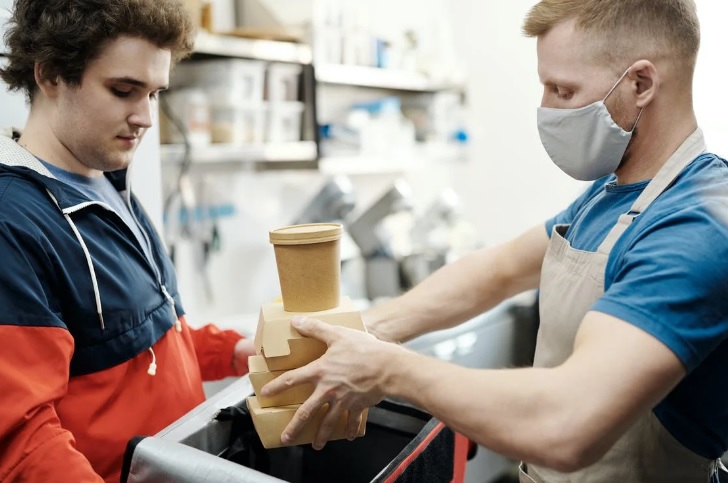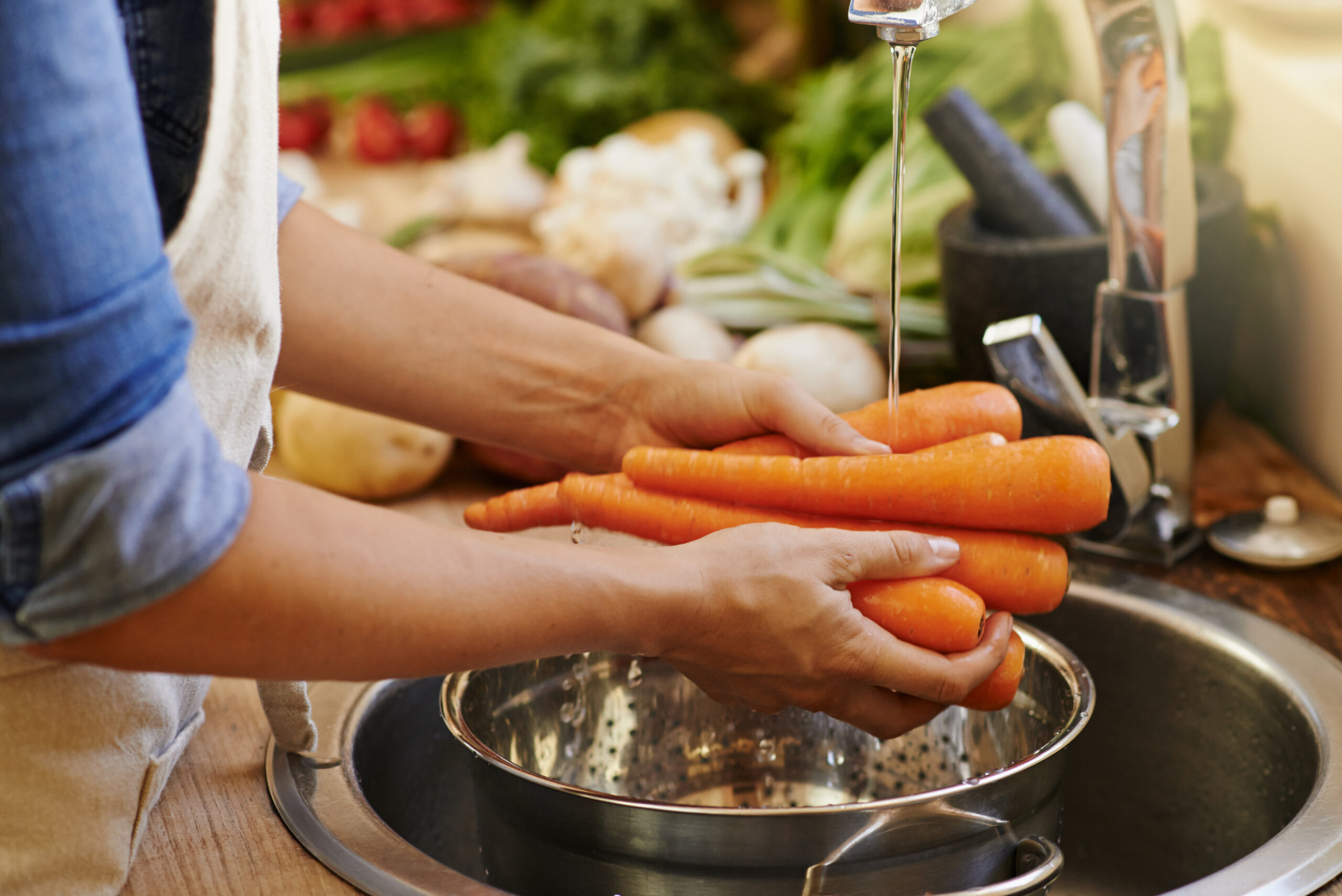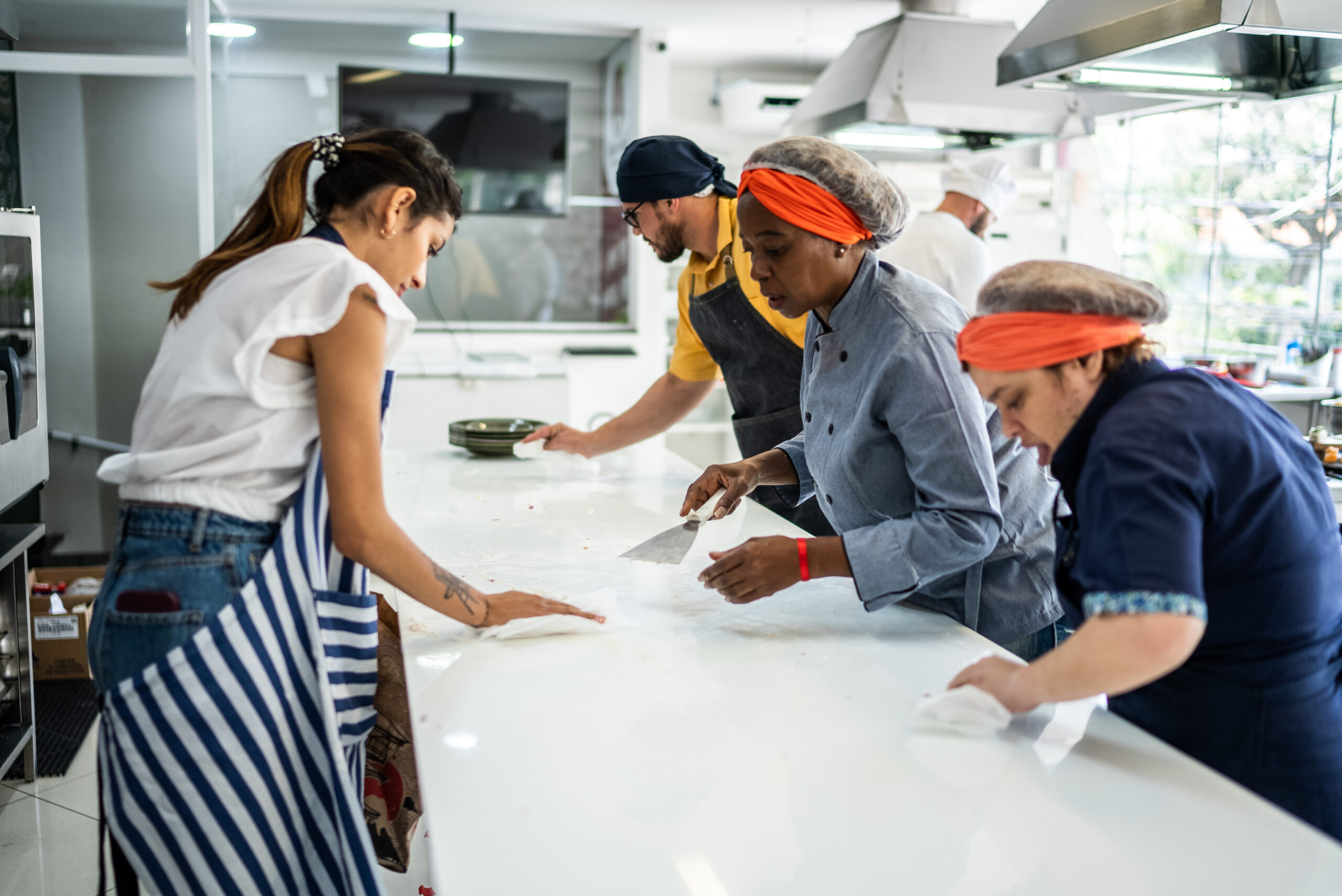What is the importance of following basic food safety rules? First of all, it is known that a foodborne illness outbreak is a food business’ worst nightmare. When you’re in the food business, the quality of your food is the number one priority.
Now imagine one day a customer found a strand of hair in your food. At best, your customer might ask for a new meal. But what if they chose to throw a fit and blame your staff? And then they post this bad experience on social media?
And what if they got food poisoning and blame your products? Next, your business might be liable to pay for medical expenses or lawsuits, and even be forced to close business.
Selling a delicious meal and gaining profits from it is not the only objective of a food business. You need to gain and maintain a reputation for being a legit establishment, following guidelines, and being trusted by your customers.
All of this can be improved by practising the basics of food safety rules, or the five keys to safer food manual, which we’re going to cover in this article.
Keep Clean
While most germs do not cause disease, dangerous ones are widely found in soil, water, animals, and people. These germs might be transmitted through hands, wiping cloths, and utensils like cutting boards or knives. The slightest contact can transfer them to food and cause foodborne diseases.
Washing hands
For now, let’s focus on the hands. Hands frequently transport germs from one place to another. So, you should wash your hands on these occasions:
- Before handling food and during food preparation;
- Before eating;
- After going to the toilet;
- After handling raw meat or poultry;
- After blowing your nose;
- After handling trash;
- After handling chemicals (even those used to clean);
- After touching your hair;
- After smoking.
When washing your hands, you should wet and rinse your hands under running water, and rub your hands together for at least 20 seconds with soap. Dry your hands thoroughly with a clean dry towel, preferably a paper towel.
While in the food industry, personal hygiene is a priority. This means the effort goes beyond washing hands. Food handlers are required to wear gloves, keep their fingernails trimmed, and always wear clean clothes.
Plates and utensils
You need to distinguish between “cleaning” and “sanitising”. Cleaning is the process of physically removing dirt and crumbs off your food or utensils while sanitising is the process of disinfecting or killing germs.
Here are some general guidelines:
- Pay special attention to utensils that touched raw food or the mouth.
- Sanitise cutting boards and utensils after they have been in contact with raw meat or seafood.
- Always clean and dry equipment, since germs grow faster in damp places.
- Scrape excess food into the trash bin.
- Sanitise utensils with boiling water or with a sanitising solution.
Protect food from animals and pests
Pests are animals like rats, mice, birds, cockroaches, flies, and other insects. These pests and other domestic pets may carry germs or other contaminants like fur or feathers.
To keep your food safe from pests and animals, you should:
- Keep food covered in closed containers.
- Keep trash bins covered and remove them regularly.
- Use baits or insecticides to kill pests but keep them away from food.
- Keep domestic animals away from the food preparation area.
Separate Raw and Cooked Food
Raw food, especially meat, poultry, and seafood can contain dangerous germs which may be transferred onto other food during preparation or storage. That is why you should separate these three types of food from other foods.
You should also use separate utensils when handling raw meat, poultry, or seafood. After that, store food in containers to avoid contact between raw and prepared foods. This is done to avoid “cross-contamination”, which is the transfer of germs or microorganisms from a contaminated source (like raw food) to cooked/ready-to-eat food.
Here are some guidelines to keep raw and prepared foods separate:
- When shopping, keep raw meat, poultry, and seafood separate from other grocery items.
- In the refrigerator, store raw meat, poultry, and seafood below cooked foods to avoid any liquid from the raw food dripping onto the cooked ones.
- Store food in containers with closed lids.
- Wash plates used for raw food and use clean plates for cooked foods.
Separation of raw and cooked foods needs to occur not only during the cooking process but also during all phases of food preparation, including the slaughtering process. Moreover, marinating liquids should not be poured over the cooked meat.
Cook Thoroughly
Proper cooking can kill almost all dangerous germs. Studies have shown that cooking food to a temperature of at least 75°C can help ensure its safety for consumption.
You need to cook food thoroughly, especially meat, poultry, eggs, and seafood. When cooking soups or stews that contain these ingredients, make sure that the liquids are clear, not pinkish. Be sure to bring them to a rolling boil. You can opt to use a cooking thermometer for ideal results.
You also need to pay extra attention when heating with a microwave oven. Some microwave ovens can cook unevenly and leave cold spots which allow bacteria to survive. Make sure the temperature and cooking time is throughout. Moreover, some plastic containers might release dangerous toxic chemicals upon heating, so please only use containers that are safe for microwave use.
Keep Food at a Safe Temperature
Germs or microorganisms can multiply very quickly at room temperature. By keeping your food temperature either below 5°C or above 60°C, the growth of germs is slowed down or even stopped. But keep in mind that a small number of germs may still grow at extremely low temperatures.
This means when refrigerating or freezing food, make sure the temperature is below 5°C. And when keeping food warm, make sure the temperature is above 60°C. Do not leave cooked food at room temperature for more than 4 hours.
When thawing food from the freezer, never place it at room temperature. You can just put the frozen food in the lower fridge cabinet, or use a microwave.
Most importantly, do not re-freeze foods that have been thawed. Because the more you freeze the food, the more the tissues break down, the flavor profile decreases and moisture escapes. Moreover, germs double at room temperature every hour in general. So, if you were to refreeze and rethaw at room temperature, you’ll have many more bacteria on the second rethaw.
Here are some guidelines to keep leftover food at safe temperatures:
- Promptly cool and store leftovers.
- Prepare food in small amounts to avoid leftovers.
- Leftover food should not be stored in the refrigerator for longer than three days and should not be reheated more than once.
Use Safe Water and Raw Materials
Using “safe” water means that the water and food are free from dangerous germs and toxic chemicals at levels that could cause illnesses or diseases. Raw materials, water, and ice may be contaminated with dangerous germs and chemicals. Toxic chemicals may be formed in damaged and mouldy food.
Safe water
Generally, you need safe water to wash fruits and vegetables, add to food, make drinks, make ice, clean utensils, and wash hands. However, there are hazards in using untreated water.
Although Singapore water is known to be potable, an extra measure never harms anyone. Besides, you never know what the water has been exposed to from the source up to your kitchen. If safety is your priority, you can try to boil water to make sure germs are killed.
Raw materials
Fresh food and vegetables might be a significant source of pathogens and chemical contaminants. That’s why it is critical to wash all raw materials with clean and safe water before consumption.
You should also cut away damaged or bruised parts since bacteria can thrive in those places.
Here are some guidelines for buying and using food materials:
- Select only fresh and wholesome food
- Avoid damaged and rotting food
- Choose foods processed for safety such as pasteurised milk or irradiated meat
- Throw away smashed, swollen, or oxidised cans
Conclusion
In conclusion, these five basic food safety rules may help you prevent unnecessary risks to your business. Though basic, these things are essential. But aside from following these rules, you can also try to upskill the people.
Try having your staff certified by taking an SFA-approved food safety course. At Skillmaster Training Centre, we offer you a food handler course that has been designed specifically to equip food handlers of both retail and non-retail food establishments with the knowledge and application skills to follow food safety and hygiene procedures and policies, as well as maintain the cleanliness and upkeep of premises.




